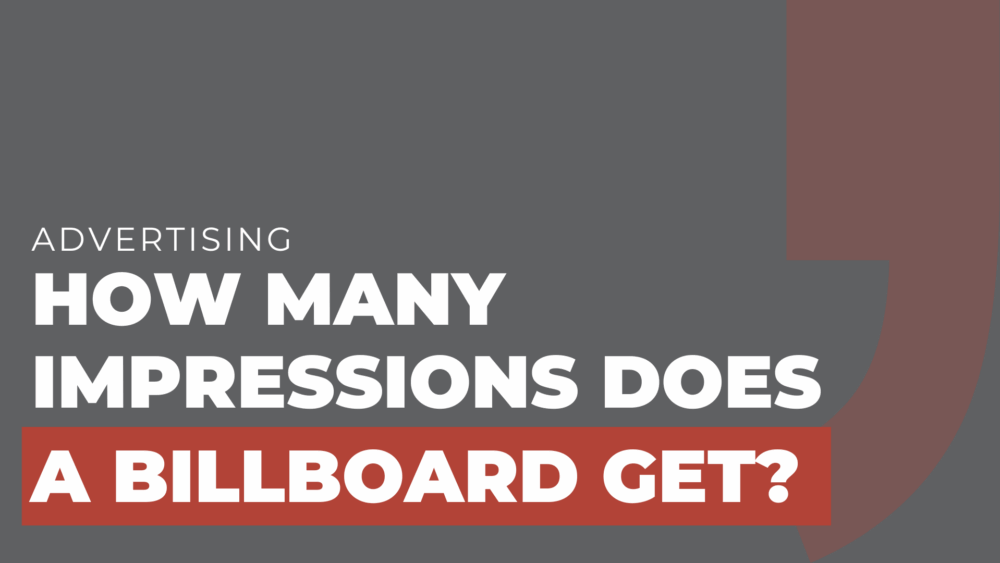Like all advertising, it is important to be able to measure the reach of outdoor advertising.
One way to gauge the reach of a billboard is by looking at the number of impressions it generates.
How many impressions does a billboard get?
An average billboard in a metropolitan area might receive anywhere from 25,000 to 50,000 impressions per day.
However, a billboard situated along a highly trafficked freeway could achieve even more, reaching up to 100,000 impressions or more per day.
It’s also important to note that these numbers can be significantly different for digital billboards, which can change their displayed message every few seconds, potentially increasing the number of total impressions.
What are Impressions?
Let’s clarify what exactly an impression is.
An impression refers to the number of times an advertisement is seen or displayed.
In other words, it measures how many people have potentially been exposed to an advertisement.
Impressions are often used as a metric in advertising to understand the effectiveness and reach of a particular campaign.
You need these initial impressions in order to leave a LASTING IMPRESSION.
What Are OOH Impressions?
OOH impressions, or Out-of-Home impressions, refer to the number of times an advertisement is viewed by people outside of their homes.
This includes billboards, transit advertising, street furniture, and other outdoor advertising mediums.
Unlike digital ads, OOH impressions are not trackable on an individual level.
Instead, they provide an estimate of the total audience size exposed to the ad.
How Are Billboard Impressions Calculated?
Calculating billboard impressions involves considering several factors, including traffic volume, location, and placement.
Here’s a simplified formula commonly used to estimate billboard impressions:
Impressions = Daily Effective Circulation (DEC) x Showing Period
Daily Effective Circulation (DEC)
DEC represents the number of vehicles and pedestrians passing by a particular billboard every day.
Traffic data sources, such as transportation departments or independent research firms, provide this information.
Showing Period
The showing period refers to the duration for which the billboard is displayed.
It could be a month, quarter, or any other specified time frame.
By multiplying the DEC by the showing period, you can estimate the total number of impressions a billboard is likely to generate over that period.
Leaving an Impression
Estimating the number of impressions a billboard receives requires consideration of factors like daily effective circulation, showing period, and location.
While billboard impressions cannot be tracked individually like digital ads, they provide an estimate of the potential audience reached.
Understanding the concept of OOH impressions and how they are calculated can help marketers make informed decisions when planning their outdoor advertising campaigns.
So, the next time you come across a captivating billboard, remember that its impact goes BEYOND what meets the eye.
So aim to get those impressions, and choose a design that leaves a LASTING impression on and attracts potential customers.


Comments are closed.